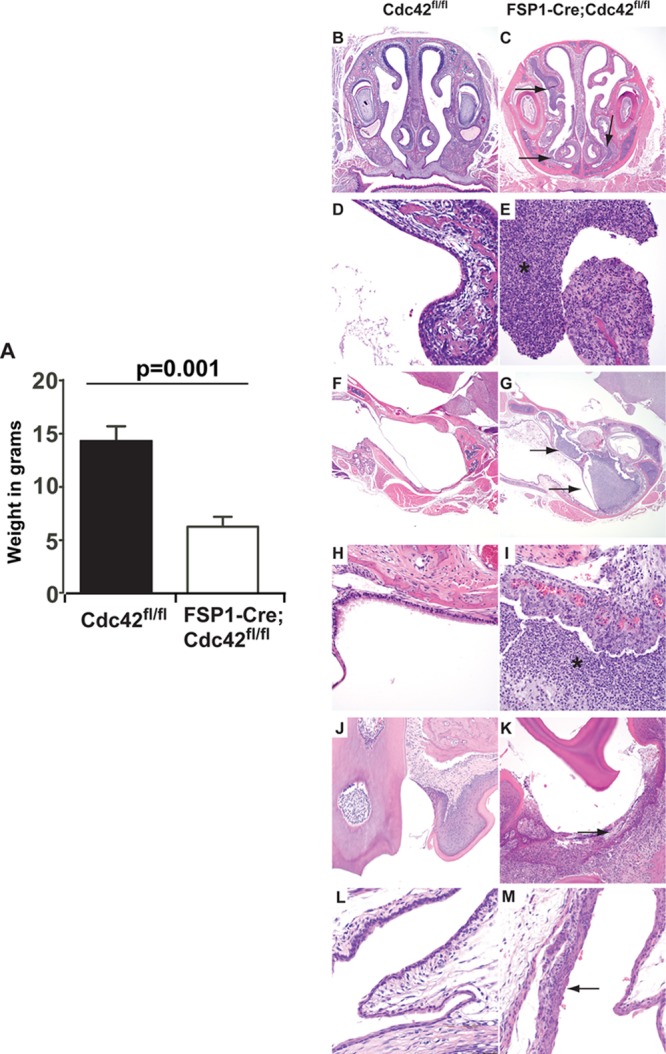Fig 1.

FSP1-Cre;Cdc42fl/fl mice lose weight and develop lethal suppurative infections of the upper respiratory tract. (A) FSP1-Cre;Cdc42fl/fl mice have significant weight loss by 4 weeks of age (mean weights ± SEMs are shown). (B to M) Hematoxylin-eosin staining of the upper respiratory tract of Cdc42fl/fl mice (B, D, F, and H) and FSP1-Cre;Cdc42fl/fl mice (C, E, G, and I). FSP1-Cre;Cdc42fl/fl mice have severe purulent rhinitis (C, arrows), while nasal passages in Cdc42fl/fl mice are normal (B). Higher magnification of the nasal turbinates of the FSP1-Cre;Cdc42fl/fl mice show that the mucosal surface is denuded and there is copious exudation of neutrophils and mucous, denoted by an asterisk in the nasal passage (E), while the Cdc42fl/fl mice have normal turbinates and clear nasal passages (D). FSP1-Cre;Cdc42fl/fl mice have otitis (G, arrows), while the ears are normal in Cdc42fl/fl mice (F). The higher magnification of the middle ear of the FSP1-Cre;Cdc42fl/fl mice shows that it is filled by neutrophilic exudate (I), while the middle ear of the Cdc42fl/fl mice is covered with normal cuboidal ciliated epithelium (H). FSP1-Cre;Cdc42fl/fl mice also had a mild neutrophilic gingivitis (K) and conjunctivitis (M) which was not observed in the wild-type mice (J and L). Magnifications, ×40 (B, C, F, and G), ×400 (D, E, H, and I), ×200 (J and K), and ×600 (L and M).
